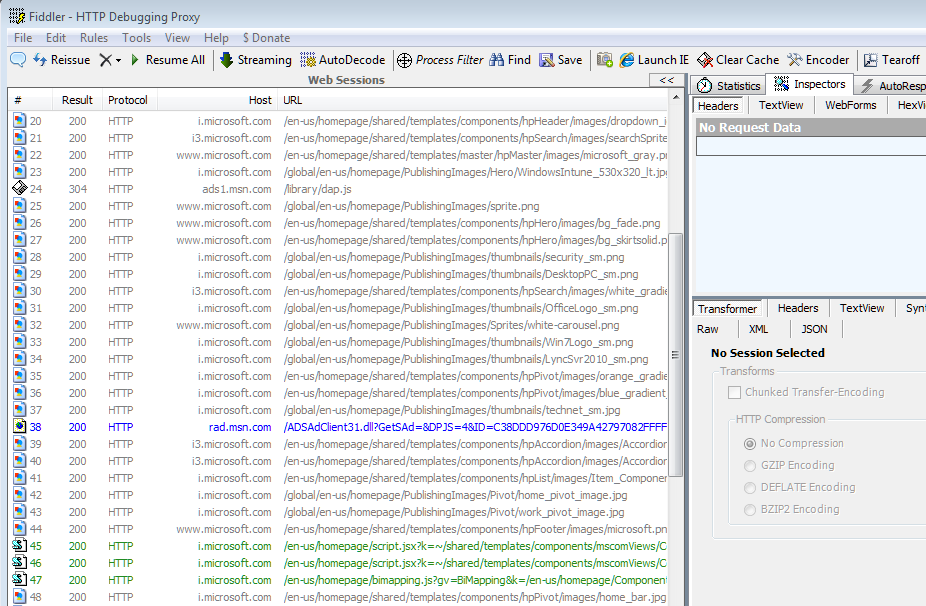Java applications and TMG access rules that require authentication
Hi there,
In this blog post, I’ll be talking about a TMG related issue. Actually it’s not an issue that stems from TMG itself but the way TMG server is configured (using authenticated rules on TMG server) triggers the problem.
This is already a known fact and we have a KB article that explains this issue (JVM applications cannot send authentication information when requested) and the workaround is to turn off authentication for the access rule that will allow the client’s connection to external networks:
https://support.microsoft.com/kb/925881/ An ISA server or Forefront Threat Management Gateway server requests credentials when client computers in the same domain use Internet Explorer to access Web sites that contain Java programs
So if you see all or some parts of a web page is not displayed correctly and you see Proxy authentication required or similar messages on the client side and you suspect that Java is involved somehow you’ll have to implement the steps mentioned at the above article.
But sometimes it may not be that clear which was the case in my scenario. The customer reported that videos at an on demand video conference site weren’t successfully viewed and the application running inside IE was displaying an unrelated error. I suspected that we were hitting the problem mentioned above and then requested the customer to configure a temp access rule to allow all outbound access for “All users”, then the videos started to play J
Then we changed the rule target to the target web site only (you can do this via a URL set (for HTTP/HTTPS access) or via domain name set (for any protocols), you can find more information below:
https://technet.microsoft.com/en-us/library/cc441706.aspx Processing domain name sets and URL sets
Since the customer was connecting to https://www.videoondemandwebsite.com , we have added this domain to the rule target. But afterwards the video access was still failing. Then we decided to collect more information on what kind of http activity was taking place on the client side. I asked the customer to install Fiddler on the client to see this activity (you can download the tool at https://www.fiddler2.com)
You’ll find below a sample screen shot taken from Fiddler which was taken when accessing Microsoft’s web site:
As you can see from the above output, even if you see a certain address in IE (www.microsoft.com in this example), the browser might need to connect to other related web sites to load some images, to get a script, etc etc. In the above example, browser also connects to ads1.msn.com or rad.msn.com ...
That was the case in my customer problem, even though the customer was connecting to https://www.videoondemandwebsite.com, the browser was connecting to a few other web sites like *.site1.com and *.site2.com. So we changed the relevant rule to cover these domain names as well and the problem was resolved:
*.videoondemandwebsite.com
*.site1.com
*.site2.com
Hope this helps
Thanks,
Murat
Comments
- Anonymous
January 01, 2003
The comment has been removed - Anonymous
September 21, 2011
The comment has been removed
